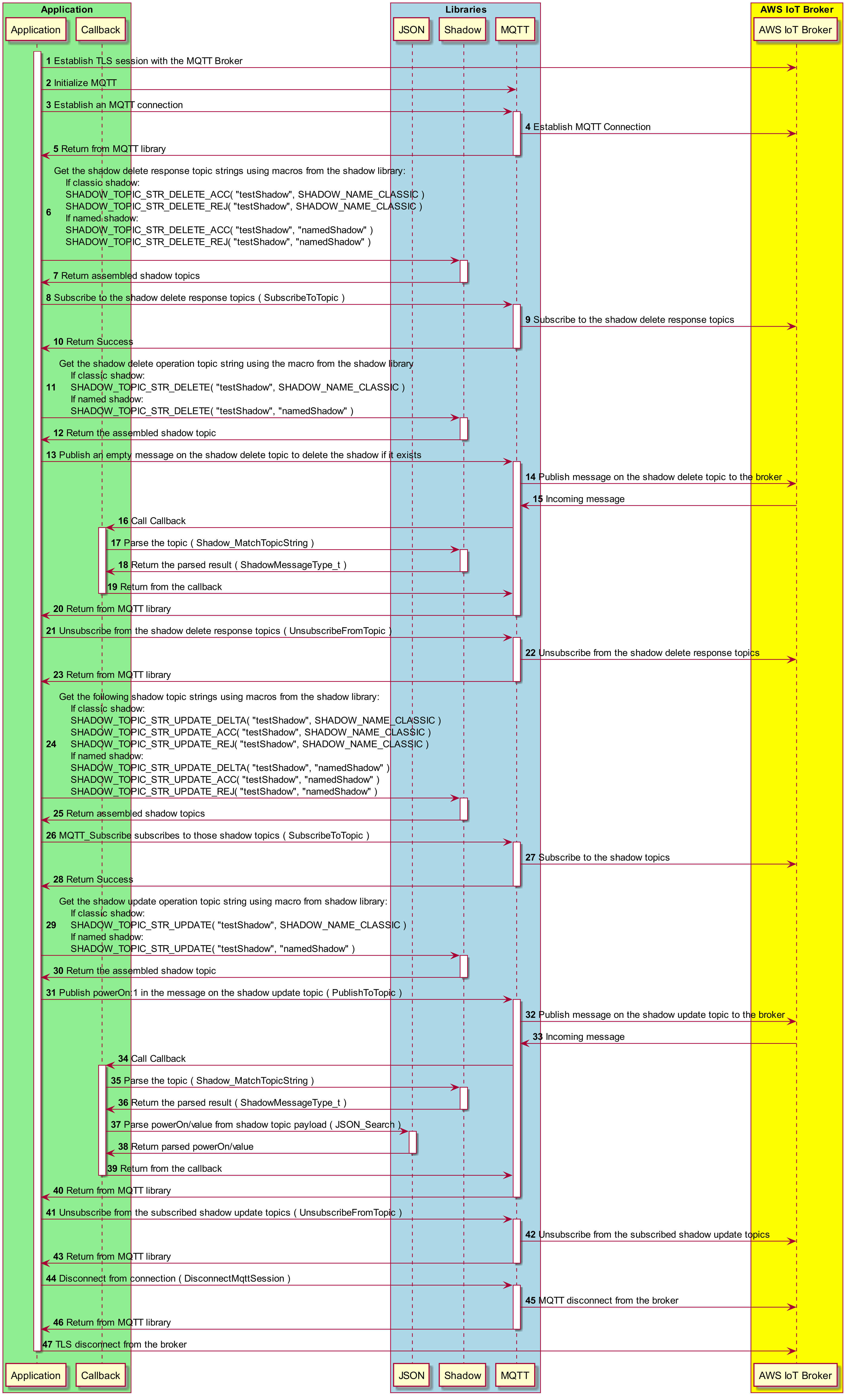This demo demonstrates usage of the AWS IoT Device Shadow library.
AWS IoT Device Shadow Demo
Demo application that uses the AWS IoT Device Shadow library, MQTT Client library, and JSON library to interact with the AWS IoT Device Shadow service.
AWS IoT Device Shadow service supports 2 types of shadows for a Thing; a classic shadow and multiple named shadows. This demo works with either a classic shadow or a named shadow depending on the value of demo config SHADOW_NAME. The demo can be configured as listed below.
- Classic shadow - Demo config SHADOW_NAME can be defined as SHADOW_NAME_CLASSIC to use classic shadow in the demo. This is the default configuration for the demo.
- Named shadow - Demo config SHADOW_NAME can be defined as a non empty C string. This configuration value will be used as the name of the shadow in the demo.
In this demo, the device is assumed to have the powerOn state, which can be 1 or 0 depending on whether or not the device is powered on. This state is maintained in the device's classic shadow or a named shadow depending on the demo configuration SHADOW_NAME. The demo does the following operations:
- Establish an MQTT connection. ( step 1. )
- Attempt to delete the shadow if it exists already. (step 6 ~ step 23)
- Assemble MQTT topic strings for device shadow operations using macros defined by the Device Shadow library. ( step 24. )
- Subscribe to the MQTT topics for shadow update operations. ( step 26. )
- Publish a desired powerOn state. This causes a device shadow update delta message to be sent to the device. ( step 29 ~ step 31. )
- Handle the incoming MQTT message in the MQTT event callback and determine whether the message is related to the device shadow using Shadow_MatchTopicString. If the message is a device shadow update delta message, set a flag for the main function to know. The main function will then publish a second message to update the reported powerOn state. ( step 34 ~ step 39. )
- Handle the incoming MQTT message again in the MQTT event callback and determine whether the message is related to the device shadow. If the message is a device shadow update accepted message, verify that it is for the update operation initiated previously by ensuring that it contains the same clientToken as sent in the update operation. ( step 34 ~ step 39. )

